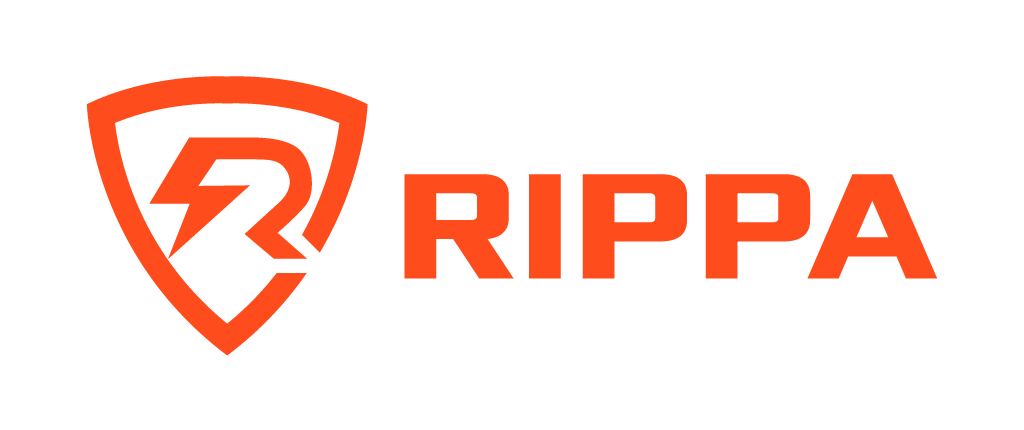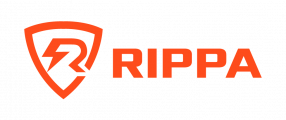
Instagram influencers may make anywhere from $300 to $25,000 each post, so it’s no wonder if you’re interested in generating money via the social media platform.
However, the thought of having your articles sponsored may seem like a joke to you at first. While skydiving in Australia, you’re uploading images of your breakfast. It’s possible that you’re more marketable than you realise. Click here to get it now: Obtain a Free Instagram for Business Toolkit and Templates.
Brands are using Instagram like crazy to spread the word about their goods. Consumers believe Instagram to be the sixth most powerful influencer on their shopping choices, according to Influencer Central’s findings.
Instagram’s popularity may cause you to believe that the site is already too crowded for you to create an impression. As a result, corporations are swiftly discovering that the ability of ordinary people to promote their goods is becoming more widely acknowledged. In comparison to the large players, micro-influencers, or persons with a tiny number of followers, get the greatest interaction from their audience.
It’s like saying, “When it comes to making a shopping decision, I’ll take the advise of my closest buddy over Kim Kardashian. I rely on the counsel of my closest friend since we have similar interests and I know she is sincere (sorry, Kim…).
Like with micro-influencers, your audience will start to recognise that you are one of their actual friends with the appropriate method. Sponsors are more inclined to give you money if they know they can rely on your guidance when making purchases.
We’ll teach you how to become sponsored on Instagram even if you have no followers at the moment. To get started, continue reading or use the links below to skip to a particular area of this page.
- Instagram Sponsorship: What You Need to Know
- What is a Sponsored Instagram Image?
- Using the hashtags #ad and #sponsor
1. Instagram Sponsorship: What You Need to Know
- Defining your brand is the first step.
- Understand who you’re writing for.
- Consistently post.
- Use geotagging and hashtags to help your posts stand out.
- Do not hesitate to include brand names in your articles.
- Ensure that your bio contains your contact details.
- Make the case for compensated endorsements.
- Decide what you’re worth and live up to it.
1. The first step is to identify your brand
You’ll get the most attention if you can identify your target audience. Do you like to write about food and health, or do you prefer to write about fashion? Whatever the situation may be, it’s critical that you build a name for yourself.
It’s not only what you publish, but how you present yourself that matters. What kind of look do you want for your content? What message are you trying to convey? You may want to try adopting a consistent feed theme in order to strengthen your brand identity (use these feeds for inspiration).
Clarity is essential. In order to be an effective influencer, a user must be able to identify the influencer’s postings as soon as she sees them in her feeds. Her confidence in the brand will develop as she sees more of the same material. Users may lose faith in the material if the influencer abruptly and unexpectedly changes direction.
If you have an online presence, you may as well link your Instagram account to it. The more your social media profiles are unified, the simpler it will be for companies to see how you can assist them. A smart method to achieve this is to create a website with comparable look and message.
2. Be aware of your audience’s needs and expectations
For a brand to collaborate with you, you need to know your audience. For both of you, it’s a win-win situation: You’re able to determine which companies will be most successful if you know your audience.
Begin by assembling the bare essentials: who are your primary constituents, and where are they located? Do your readers have a favourite post of yours? What are the ideal times of day to reach them and what conclusions can you draw from this?
You may use demographic data to help you get brand collaborations. Companies want to know how many people you can reach if you collaborate with them. The most convincing explanation is “You’ll be accessing thirty-something professional women, particularly from New York, who generally use Instagram first thing in the morning and enjoy fitness material.”
3. Posting on a regular basis is essential
14 studies were analysed by CoSchedule in order to determine the optimal frequency with which you should update your social media profiles. They discovered that you should post at least once a day on Instagram, but that you may post as often as three times a day.
8:00 to 9:00 a.m. and 2:00 a.m. were shown to be optimal posting hours by CoSchedule.
You must post at least once a day if you want to increase your following. Your audience may unfollow you if you don’t post often enough, and you don’t want that to happen because of a lack of consistency.
In the end, it’s up to you and your audience to choose what works best for them. If you publish three times a day, your audience may feel like they’re being inundated, or they may like it. At midday, maybe your readership is most responsive to your content. The answer to this question will need some experimentation, as well as the use of Instagram measurement tools.
To get your kit, just fill out the form provided.
Form Icon/Light Icon
I made this using Sketch.
Hello there What’s your name, then? A person’s first and last names
Hello there, I’m null. What is the address of your email account? Sender’s Email Address
What’s your contact information, by the way?
The Phone’s Contact Information
What is the name of your business and what is the URL of your website?
How many people work at the company?
What are you waiting for?
4. Make use of geotagging and hashtags
In order to expand your fan base, you’ll need to use hashtags to help people find your content. TrackMaven showed that nine hashtags were the sweet spot for improving interaction on Instagram posts, however you may use as many as 30 per post.
If you can, try to keep your hashtags related to your post’s content. Make sure the hashtags you use aren’t broken or forbidden (have a look at this list of banned hashtags if you’re uncertain) before posting.
Make sure your hashtags don’t cover too much ground. For example, the hashtag #healthyliving has almost 20 million posts, but the hashtag #healthylivingtips has just 13,000 entries. It will be simpler for your material to be found if there is less competition.
You may also get a better idea of what your post will be competing against by browsing the hashtag’s website. The fact that your article is about cycling rather than healthy living suggestions means that the hashtag #Healthylivingtips may not be appropriate for your post at all.
However, geotags serve a distinct purpose. People looking for a certain place might use geotags to locate you. Aiming for a certain demographic helps you obtain more followers, and it may also help you attract the attention of advertisers. In the case of boutiques, for example, if they notice that you often publish fashion advice from the California area, it’s a win-win situation.
5. Make sure to include your favourite companies in your postings by tagging them in the captions
After following these steps, you’re now ready to begin contacting companies. By now, you’ve established a clear sense of who you are as a blogger and who your target audience is. A better sense of the sorts of firms that might benefit from working with you should now be clear to you.
Start small and build from there. Rather of going directly to Estee Lauder if you’re interested in skin care, consider tagging tiny skin care start-ups you’ve previously seen on Instagram.
As an illustration, here’s an example: In this photo, travel influencer @Tzibirita shows off her Paul Hewitt timepiece. In her description, she mentions @paul hewitt, and the picture is high-quality and suits her brand. In spite of the fact that Paul Hewitt does not pay for your material, you may still tag their brand in the post. At the very least, it will get your name out there.
You may start by tagging tiny companies in your descriptions. Respond to questions like “Where can I purchase one?” or “How much?” and the brand will quickly notice that you’ve shown yourself a good sales partner for the product.
6. In your bio, including your phone number and email address
As you write your bio, think of it as an opportunity to show businesses that you’d want to become an influencer. If at all feasible, include a way for them to contact you, such as an email address or website, as well as a press kit.
For example, @tzibirita doesn’t fill out her bio with unnecessary information. As a “”content creator,”” she adds a title to her email and website. If a company wants to do business with her, they’ll know she’s up for the challenge.
In addition, a website or blog is an excellent platform for showcasing your brand’s breadth and depth. Brands may be interested in learning more about you by visiting your Press Page on your website. Advertisers will be able to tell that you have influencer experience if you start supporting businesses.
7. Sponsorships might be offered for a fee
Reaching out to companies and offering your services is fine. You may be able to get some work without having to wait for brands to come to you.
Be on the lookout for firms who have obviously put a lot of effort into building their Instagram following. To begin, look at the sponsorships of other industry influencers who have a comparable following. Always keep in mind that tiny steps are perfectly OK. To create a portfolio, work with smaller companies.
Send an email to the brands on your list to see if they’d be interested in collaborating. If you’re applying for a position in a certain area, make it obvious and concisely explain why you’re qualified to do so.
Include facts like following count and average engagement rate to show why you’d be a good match for the company.
Alternatively, you might send a direct message (DM) to a brand directly from the Instagram platform. However, if a company receives hundreds of messages a day from people applying for the same position, your message may be overlooked.
8. Realize your value
When a brand reaches out to you, make sure you know how much you’re willing to charge for your services. As a rule of thumb, you can expect to pay $10 for every 1,000 new followers you get, although this might vary widely according on the number of likes you receive on each post. It is possible to raise your prices as your business grows.
However, you may incentivize companies to pay more by having a minimum price in place. A link to their website in your bio for 24 hours can be included in the price of $300. You may make the bargain more sweeter by using additional Instagram features.
Your pricing structure will need to be in place before you can begin sponsoring posts on behalf of a business. Be aware that there are two types of “sponsored” posts: those that are sponsored by a business who pays Instagram and those that are sponsored by a brand who pays another Instagram user.
Confused? What I’m saying is this:
2. What is a Sponsored Instagram Image?
The poster of a sponsored Instagram post makes a financial investment in order to increase the post’s visibility. Sponsorships may be divided into two broad categories: In the first, a brand posts a message on Instagram and pays Instagram for access to a certain group of followers. A business funds an Instagram user, known as a “Influencer,” who then uses their post to promote the brand.
More information on the various types of sponsored posts may be found below:
1. Ads and Sponsored Content
With a native ad management platform like Twitter, LinkedIn, and Facebook, Instagram is much like the other social media platforms in this regard. For example, an advertiser may use this tool to find the demographics of their target audience and then pay a certain amount of money to get their post in front of Instagrammers who share these demographics.
It’s important to keep in mind that the advertiser is the one who creates and publishes the content. They’re paying Instagram to have access to their target demographic, but they’re in charge of creating the content themselves.
2. Sponsorships for a fee
Brands and other Instagram users engage in paid sponsorships. Personal brands and a following of their own are common characteristics of this individual. “Influencer” is a term used to describe this user.
To locate and collaborate with businesses that have a comparable audience, this individual may follow the methods outlined previously in this article. They may charge a fee to a company that wants to promote them if they discover a sponsor willing to pay for a sponsored post. Social media product placement is like this: A company may pay a TV programme to put its beverage on the counter in the series finale, but they can also pay a person on Instagram to hold the same bottle in a photo on their account.
In the end, I chose to go with a cliche since it was the only thing I could think of that would fit the bill.
Ad managers on Instagram, like influencers, let marketers reach a new audience they wouldn’t otherwise be able to reach. There are several notable contrasts between this sort of sponsorship and other forms of advertising, such as when a business pays an influencer rather than Instagram to get access to their following.
Each sector has a slew of influential people. Listed here are a slew of today’s most well-known influencers and the sorts of audiences they draw.
3. Using the hashtags #ad and #sponsor
Influencers have come under criticism in recent years for not making it plain to the public that they were sponsored.
Department shop Lord & Taylor, for example, agreed to pay 50 influencers to wear a dress in their pictures without hashtagging #sponsorship or #commercial in 2022 after accusations with the FTC were made against the company by the agency.
Influencers are expected to include the hashtags #ad or #sponsored when posting content for which they are compensated, however some businesses object to this practise since it gives the impression that the post is sponsored.
With the implementation of a paid partnership tool in 2022, Instagram was able to address this problem by labelling posts with “paid partnership” if a business certifies a connection with a user. For the brand, this lets them track the campaign’s success.
It’s imperative that your followers be aware if you are being compensated in exchange for promoting a certain product. If you’re detected, you might lose everything you’ve worked so hard to build—namely, a genuine, trusted community—and your account’s reputation.
Using the hashtag #Airbnb partner, for example, indicates a paid collaboration without using the word “ad.” This is a good alternative if you don’t want to use the #ad or #spon tag.
When in doubt, stick to Instagram’s rules and regulations. Instagram’s regulations on sponsored content are available in their entirety on its website.
In the end, becoming sponsored on Instagram isn’t simple; it requires time, work, and dedication.
However, if you put in the time and effort to stand out in the business and connect with your followers on a personal level, it can be quite rewarding.



